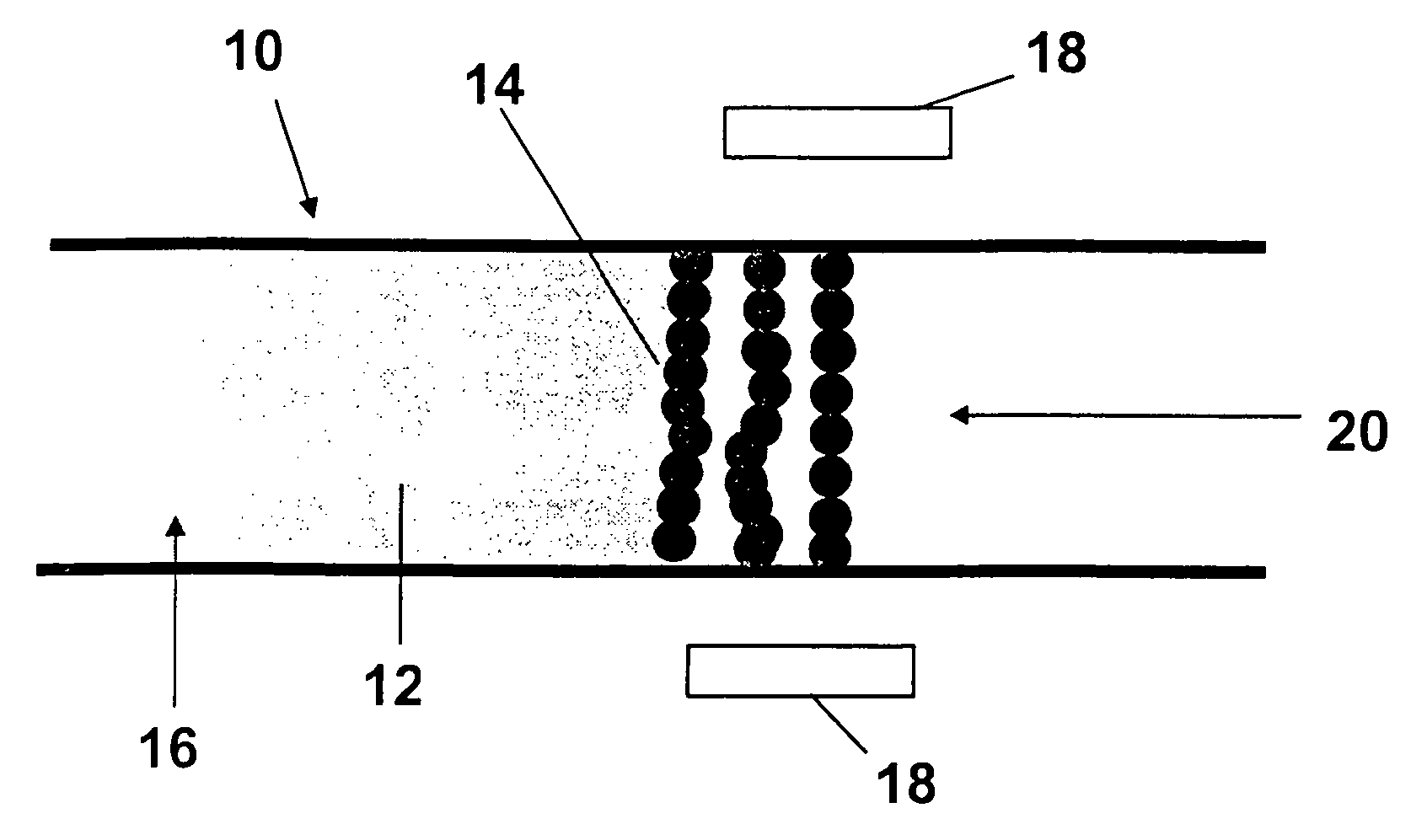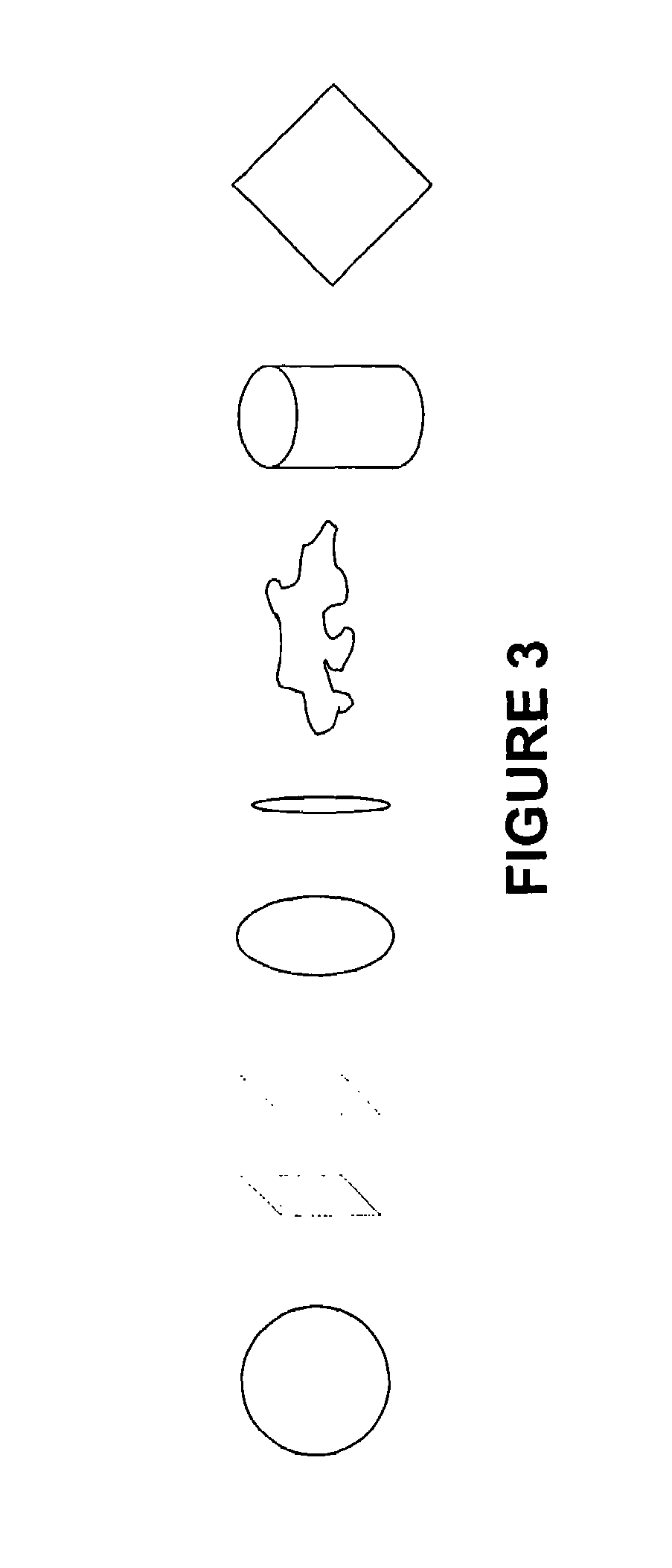Method and kit for inducing hypoxia in tumors through the use of a magnetic fluid
a magnetic fluid and tumor technology, applied in the field of tumor treatment, can solve the problems of ineffective chemotherapy and radiotherapy, inconvenient use, and inability to achieve the effect of overcoming the drawbacks associated with the tumor
- Summary
- Abstract
- Description
- Claims
- Application Information
AI Technical Summary
Benefits of technology
Problems solved by technology
Method used
Image
Examples
example
[0040]Ultrafine powders of iron with a particle size less than about 20 nm were produced using the proprietary microwave plasma chemical synthesis process described in U.S. Pat. No. 6,409,851 by Sethuram et al. Vapors of iron pentacarbonyl were fed into the plasmatron with argon as the plasma gas. The plasma gas flow rate was about 0.003-0.0034 m3 / min and that of the carrier gas was about 0.0003-0.0004 m3 / min. The plasma temperature was about 900-950° C., the powder feed rate was about 50-60 gm / hr, and the quenching water flow rate was about 2.0-2.5 liter / min at about 20° C. The reactor column diameter was about 48 mm and its length was about 10″. The microwave forward power was about 4 kW, the reflected power was about 0.7 kW, and the operating frequency was about 2450 MHZ.
[0041]The iron particles were coated with dextran in solution phase and dispersed in water by high-speed shear mixing and ultrasonification.
PUM
 Login to View More
Login to View More Abstract
Description
Claims
Application Information
 Login to View More
Login to View More - R&D
- Intellectual Property
- Life Sciences
- Materials
- Tech Scout
- Unparalleled Data Quality
- Higher Quality Content
- 60% Fewer Hallucinations
Browse by: Latest US Patents, China's latest patents, Technical Efficacy Thesaurus, Application Domain, Technology Topic, Popular Technical Reports.
© 2025 PatSnap. All rights reserved.Legal|Privacy policy|Modern Slavery Act Transparency Statement|Sitemap|About US| Contact US: help@patsnap.com



